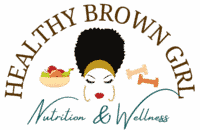
With obesity, cardiovascular disease, diabetes, and the risk of contracting an infectious virus on the rise, It’s more important than ever to focus on maintaining good health. It’s no secret that adopting healthy habits can drastically reduce your risk of developing a chronic illness and help you to maintain a healthy weight.
Not sure where should you begin? In this article, I’ll get you started with 10 healthy habits that you can implement in your life RIGHT NOW, in 2022, to help improve your health.
Let’s dive right in.
1. Drink More Water
Let’s be honest. Many of us don’t drink enough water. If you are one of those people, this is probably the easiest and most important healthy habit to implement into your lifestyle.
Water is primarily important because it plays a key role in so many functions and mechanisms within the body. Aside from that fact, replacing sugary drinks with water can help you to maintain a healthy weight.
To put this in perspective, let’s look at Coca-Cola which contains around 25-30 grams of added sugar per 8 oz serving. That’s equivalent to 5-8 teaspoons of sugar in just one drink! By replacing one serving of this sugary beverage with water, you could save yourself anywhere from 80-130 calories per day.
As a general rule, you should consume approximately 11-15 cups or 3-4 liters of water per day. Eighty percent of that should come from what we drink, and the remaining twenty percent comes from food.
That being said, many other factors, such as gender, activity level, and health status also play a role in how much you should drink. To ensure proper hydration, make sure you are urinating regularly and producing sufficient amounts. You can also observe the color of your urine to ensure it’s not too dark.
Be mindful that certain supplements and other conditions can cause dark-colored urine.
If you have trouble drinking enough water, try carbonated water, infusing your water with fruit, or purchasing a motivational water bottle. I’ve linked my favorite motivational water bottle below.
2. Read Food Nutrition Labels
It’s so important to know that just because food is packaged in green packaging and says “organic”, “sugar-free”, or “all-natural”, doesn’t mean the product is actually healthy. Many of the claims made on the front of packaging are not regulated by the Food and Drug Administration (FDA).
The sad truth is that many manufacturers use unregulated claims as marketing schemes to influence you to buy their products.
Making a habit of reading the nutrition label on the back of packaged foods will help you make better-informed food choices. Here are some beginner tips that can help you decipher food labels:
Check the serving sizes:
Now, I hate to be the bearer of bad news, but one serving of your favorite dry cereal is usually only one cup. I’m almost positive that only psychopaths eat cereal one cup at a time, but I digress.
You may be asking why this matters. Well, if one serving of your favorite cereal is only one cup, then filling up your bowl with cereal that’s 130 calories per serving could mean extra calories that you didn’t plan for if you’re not careful.
This is true for, all packaged foods, even those that seem to be packaged for one person. Take Ramen Noodles, for example, one package contains two servings. However, many of us eat a whole package in one sitting, therefore consuming twice the calories listed on the nutrition label.
Am I saying you should only eat half the package? Honestly, that’s totally up to you. My intent here is not to turn you into a calorie-counting maniac. It’s to help you to develop a habit of being more aware of how much you are consuming so you can make better-informed decisions.
Avoid added sugars:
Food labels show sugar content in 3 different ways, total sugars, added sugars, and in the ingredients list.
Total sugars are the total amount of sugar in the product, both naturally occurring and sugar that is added. Added sugar is natural sugars such as honey, sucrose, or dextrose that is added during processing.
These are the sugars you want to be cautious of.
The ingredients list can also help you identify what natural sugars and artificial sweeteners are in products. Sugar and artificial sweeteners are listed under many different names in the ingredients list. If you’re interested, good book that lists the many names of sugar goes by is by Robert H. Lusting’s called, Sugar Has 56 Names: A Shopper’s Guide (A Penguin Special from Hudson Street Press).

Be mindful of salt intake:
Let’s face it, the vast majority of us are consuming way too much salt in our food. A big contributor is the sodium content in prepackaged foods. In general, we should only be consuming 2,300 mg of sodium per day. That is equivalent to only ONE teaspoon per day!
Many pre-packaged and processed foods contain exorbitant amounts of sodium per serving, even if they don’t taste like it. You should aim for low-sodium packaged foods when possible. The FDA states that low sodium is less than 5% of sodium per serving.
Tracking the amount of sodium in processed foods better manages your sodium intake. For more guidance, visit the fda.gov for tips directly from the Food and Drug Administration (FDA).
3. Manage Your Portions
It’s no secret that as a culture here in America portion sizes are a bit on the larger side. We want more for our money regardless of the health implications when it comes to food.
Regardless, it’s still best practice to manage portions if you want to prevent overeating, or consuming too many calories throughout the day.
As a general guideline, half of your plate should have fruits and vegetables, a third should be grains, and a third should be protein.
There are several easy ways you can maintain healthy portion sizes. You can use measuring cups, portion control plates, or a food scale. If you don’t have access to any of those, you can eyeball using the palm of your hand. Here is a great video that explains how to do this.
Lastly, you can also visit myplate.gov for some general guidelines on how much of each food group you should be consuming daily based on a 2000 calorie diet.
4. Plan Your Meals
Planning your meals is another way to prevent overeating or overindulging in less than healthy options. There are a few ways to do this. If you don’t mind batch cooking and have the time, meal prep is a great way to plan your meals.
My personal preference is menu planning, which consists of writing my meals for the week on a weekly menu. I primarily use this method for dinner, which helps prevent ordering out too often.
Since I fast and don’t typically eat breakfast, I will loosely plan my lunches to give myself multiple options. However, you can menu plan all your meals if that works best for you.
If I’m going to be away from home, I’ll try to plan my fast food stops by selecting where and what I’ll eat ahead of time. The key is trying to prevent split decisions when you are hungry. If you are pre-planned, you are more likely to make healthier choices
5. Try Intermittent Fasting
More research continues to be published about the benefits of fasting and time-restricted eating. These benefits range from helping with weight loss to improving insulin resistance as well as other metabolic markers.
Additionally, further research shows that aligning your eating window with the body’s circadian rhythm could enhance intermittent fasting benefits.
The circadian rhythm is the body’s internal clock that regulates many functions according to the environment’s day and night cycle. Studies show that eating in alignment with your circadian clock may help reduce the risk of developing diabetes, obesity, or insulin resistance.
Research seems to favor an eating window of 10:00 am and 6:00 pm however, this is not set in stone. As a general rule, having an eating window that ends earlier in the day can prevent disrupting the digestive and metabolic circadian rhythm.
You can also read the article I wrote titled Intermittent Fasting & Pre-Diabetes: Research Highlight, for more info on this topic.
It is important to note that intermittent fasting is not recommended for everyone. You should always consult your doctor or registered dietitian before making any major changes to your diet.
6. Drink Alcohol in Moderation
If you choose to drink alcohol, be mindful of how much you drink if you want to maintain good health. The Dietary Guidelines for Americans recommends drinking 2 drinks or less for men and 1 drink or less for women.
Alcohol does not offer any nutritional value. So drinking too much can increase your risk of developing chronic diseases such as cancer. It can also increase calorie consumption, which can lead weight gain over time.
7. Cook With Unsaturated Fats
Many people view all cooking oils as equal when that is the farthest thing from the truth. With so many on the market, it can be hard to decide which ones are best.
There are two rules that you can follow to ensure you using healthy cooking oils.
First, you want to choose unsaturated oils, which are oils considered to be high unsaturated fats. Second, choose oils with a high smoke point to reduce the risk of consuming toxins that can release free radicals in the body.
Examples of oils that fall into both categories are olive oil, avocado oil, and sesame oil. Studies continue to show that replacing saturated fats with unsaturated fats can improve your overall cardiovascular health.
8. Eat More Seafood
If you do not have a seafood allergy or aversion, try eating seafood at least twice per week. Remember those unsaturated fats I mentioned earlier? Well, seafood, specifically fish is packed with them. Studies show that seafood provides important several nutrients such as protein, essential amino acids, polyunsaturated fats, and a list of vitamins and minerals.
The benefits associated with consuming seafood are endless. Eating more seafood can help you lose weight, improve brain function, boost immunity, and improve cardiovascular health.
9. Add More Color to Your Plate
Food, specifically fruits, and vegetables come in a variety of colors that you should try to include at mealtimes. Colorful foods such as grapes, peppers, squash, watermelon, etc, can provide your body with a number of important vitamins and minerals.
Adding color to your plate can also increase the number of antioxidants and polyphenols you consume. Studies show that these properties fight against diseases like cancer and have anti-aging effects.
For a list of colorful foods, you can visit the American Heart Association’s (AHA) website.
10. Consult With an RDN
As a future Registered Dietitian Nutritionist (RDN), I could be biased. But I believe, this healthy habit is probably the most important.
I’ve included a lot of information in this blog post, but consulting with an RDN can give you advice on how to incorporate these tips along with others into your daily life.
Whether you’re trying to lose weight, improve your cardiovascular health, or just learn how to improve your health overall, an RDN works with you to come up with a personalized plan to help you meet your goals.
That’s it! With these 10 healthy habits, you’re already on your way to a healthier you. Don’t feel pressured to implement all of these at once. You can pick a couple, master them, then add more as you go.
Make sure to like this post if you enjoyed the content and subscribe to my email list to get your FREE Intermittent Lifestyle Guide and more health and nutrition info right to your inbox.

I hold an undergraduate degree in Nutrition and Dietetics, and am currently pursuing my masters degree in Positive Psychology. I am also member of The Academy of Nutrition and Dietetics so I can stay up to date on all the latest nutrition news and research. I am dedicated to sharing what I have and am learning both personally and professionally with women seeking to lose weight and improve their lifestyles.
